 |
Geologic Time |
 |

 |
Geologic Time |
 |

The early atmosphere of the Earth was probably created by the outgassing. Outgassing is a process where dissolved gases in molten rock are released during volcanic eruptions. Active volcanoes continue to release water vapor, carbon dioxide, nitrogen, and several trace gases. Scientists believe that the early atmosphere was composed of these gases. The water vapor created clouds as the Earth cooled and torrential rains created the oceans and carbon dioxide dissolved in the water leaving behind a nitrogen rich atmosphere. The oxygen in the Earth's atmosphere was created by cyanobacteria and by plants during the process of photosynthesis. The first oxygen combined with iron contained in the rocks. Once the iron in the rocks combined with oxygen to form iron oxide, the oxygen began to accumulate in the atmosphere allowing aerobic organisms to evolve.
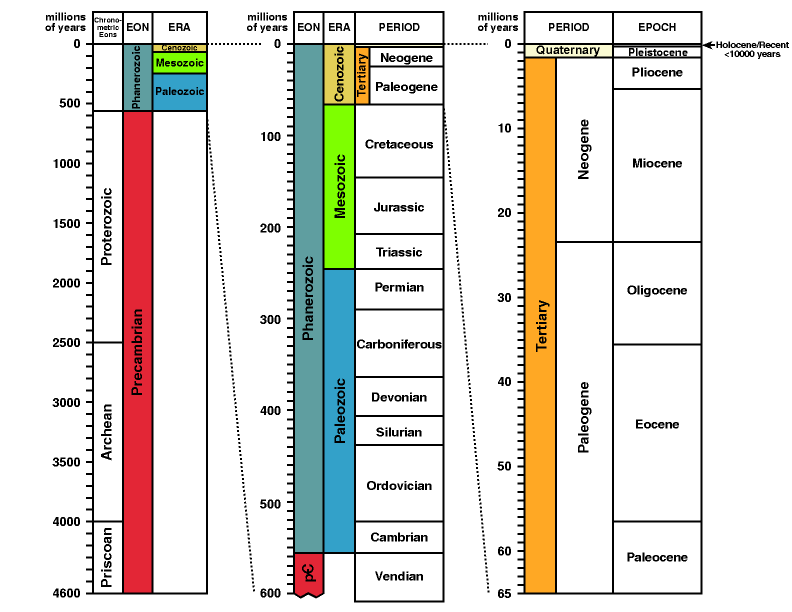
Geologic Time Scale
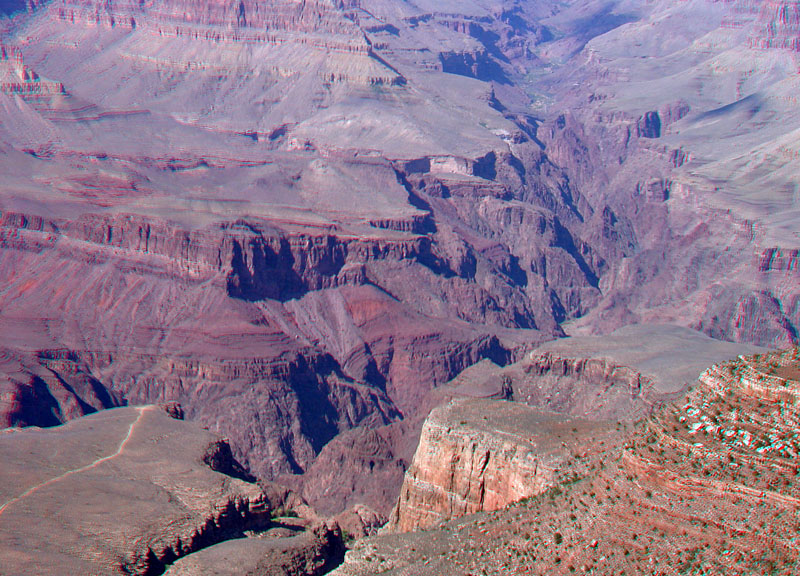
Visible Precambrian Rocks
The Precambrian is the largest time period spanning approximately four billion years. Since the rocks of the Precambrian time period do not contain fossils, not much is known about the Precambrian time period. Correlation of the rocks is extremely difficult without fossils and often the rocks are eroded or metamorphosed. Large areas of Precambrian rocks are visible on many of the Earth's continents. These areas are called shields.
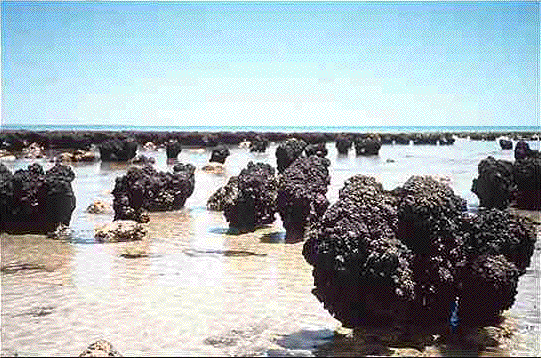
Stromatolites
The most common Precambrian fossil are stromatolites, distinctively layered mounds or columns of calcium carbonate. These columns, while large, were deposited by microscopic algae two billion years ago. Well preserved fossils of microscopic organisms have been found in chert dating beyond 3.5 billion years old. Other Precambrian fossils include prokaryotes and eukaryotes, including plant fossils. Trace fossils of worms and trails have also been found in Precambrian rocks. At the close of Precambrian, the fossil record has shown multicellular organisms.
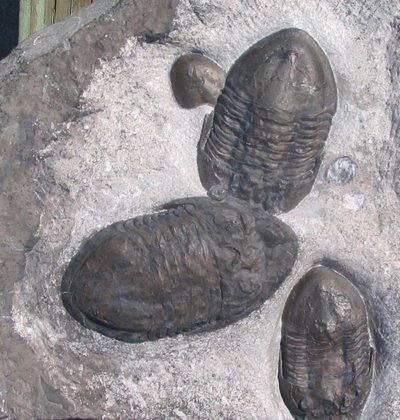
Fossils of the Paleozoic
Encompassing 292 million years of Earth history, the Paleozoic era consists of seven periods. The beginning of the Paleozoic era is marked with fossils containing hard parts, shells, teeth, bones, or scales.
Several invertebrate groups lived in the seas of the Paleozoic. Trilobites were abundant in the Cambrian period and by the Ordovician period, brachiopods were numerous. Cephalopods like snails, clams, and squid appeared during the Ordovician. During the Devonian period, armor plated fishes, fish containing cartilaginous skeletons or bony skeletons had evolved. Plants became adapted to land and evolved from water edge plants that were leafless vertical spikes to trees over ten meters high. Modern amphibians and insects appeared and by the end of the Paleozoic, large tropical swamps could be found across North America, Europe, and Siberia.
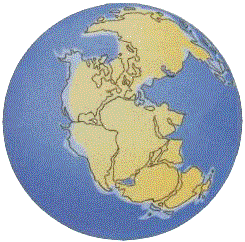
Gondwanaland
The early Paleozoic Earth has a large southern continent made up of the continents of South America, Africa, Australia, Anatrctica, and India. This landmass was called Gondwanaland. The landmass of North America and Europe are thought to be positioned near the equator during the early Paleozoic. The North American landmass did not contain living things, or have Appalachian or Rocky Mountain Ranges, but the Taconic Orogeny did exist. The Tactonic Orogeny has since been eroded away. Evaporites formed during the Silurian period when shallow seas covered North America. Late in the Paleozoic, the landmasses came together to form Pangaea.
The Mesozoic era covers 183 million years and is commonly referred to as the "Age of Dinosaurs". The fossils of the late Paleozoic differed greatly from the fossils of the early Triassic rocks, so geologists created the Mesozoic era. The marine sediments surprisingly lacks fossils suggesting a terrestrial environment. One well known Jurassic deposit is the Morrison Formation. The Morrison Formation is full of dinosaur fossils. While Pangaea began to break up during the Mesozoic era, life continued to evolve. Gymnosperms including cycads, ginkgoes, and conifers appeared. Animal life continued to evolve as reptiles developed shell covered eggs enabling reptiles to remain on land permanently. Finally, as almost everyone knows, dinosaurs were plentiful.

Morrison Formation

Gymnosperms
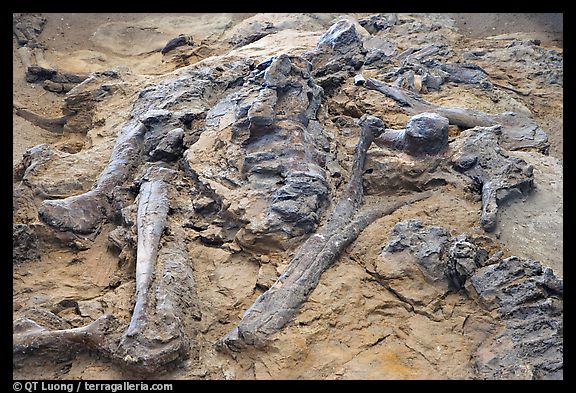
Dinosaur Fossils
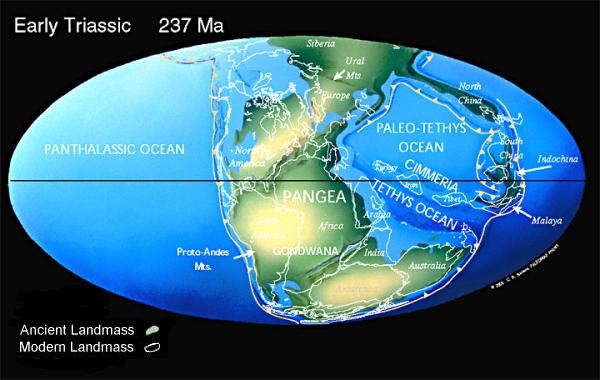
Earth in the Mesozoic
The Cenozoic era is the "era of recent life". This era marks the arrival of mammals which are animals with live births and are warm blooded. The landscapes of today were also formed during the Cenozoic. The era is divided into two periods the Tertiary and Quaternary. Scientists know the most about the Cenozoic era because it is the most recent and smallest era, spanning 65 million years.
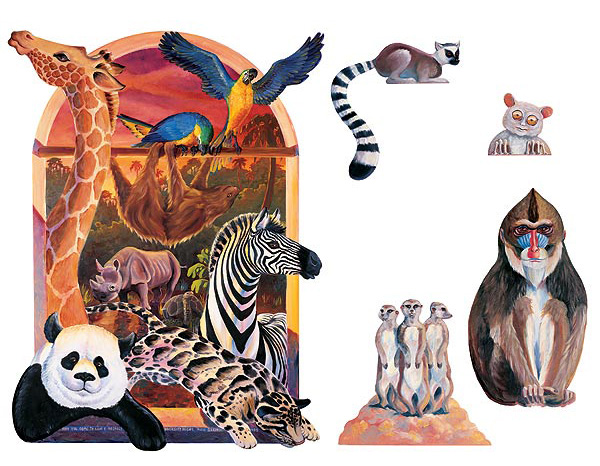
Modern Animals

Earth Today
Back to Geology Main |
Go To Geologic Time Project |
Go To Geologic Time Assignments |